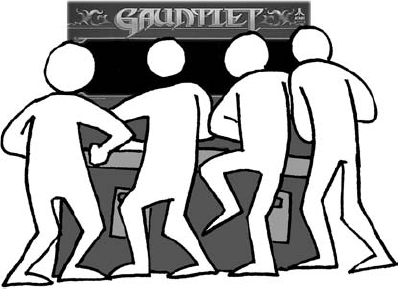
The first true multiplayer game I remember playing was Gauntlet (Atari, 1985) where up to four people were able to play together. Because of the arcade cabinet's configuration, what I remember most from playing Gauntlet (other than "elf needs food badly") is that my friends and I would push and jostle each other as we played the game. Even though Gauntlet is a cooperative game, we sure didn't play it that way. We were always trying to grab the health or be the first to activate the "smart bomb" potion.
The jostling continued through the years with Teenage Mutant Ninja Turtles (Konami, 1989) and Captain America and the Avengers (Data East, 1991). When Doom (id Software, 1993) reared its ugly demon head, the jostling became virtual via our local area network (LAN) connection. And by jostling, I mean blasting each other with plasma rifles during death matches. Multiplayer jostling has since evolved even further:
Head-to-head: two or more players compete against each other in real time on the same game system. Most sports, action, and some FPS games allow for head-to-head play.
Network/peer-to-peer: two or more play with and against each other in real time on machines connected via LAN or wide area network (WAN, aka "the Internet"). The difference between the two is proximity: WAN extends past a room, office, or campus. LAN parties (where everyone brings their computer over to someone's house to play a FPS) are still quite popular social events. Or they can be wireless as with the Nintendo DS.
Client server LAN: a computer that is big and fast enough to handle multiple users at once. Some MMO games and MMORPGs use client servers to handle the enormous traffic, and have many LANs to handle the user demand.
Once you've decided how your player is going to connect, you have to determine what they are going to play. There are broadly three different styles of play found in multiplayer games:

In competitive games, players have the same objective but work against each other—often fighting to the "death" to complete an objective first or achieve the highest score.
Cooperative games give players the same objective while (in theory) working together to achieve them. After playing Gauntlet with my stupid friends, I realized even a cooperative game can easily dissolve into a competitive one.
Conjugate gameplay has players sharing the same gameplay space but not the same goals. With the rise of massively multiplayer online games (MMOs) and massively multiplayer online role-playing games (MMORPGs), conjugate gameplay has become increasingly frequent as dozens if not hundreds of players dash around the game world at the same time, each with their own agendas and motivations.
So just what are these motivations? Well, I'm glad you asked, otherwise I wouldn't have had anything to write about for the next few pages. Look at all of these game modes found in multiplayer games; some unique to the genre. You can easily combine these modes to create conjugate gameplay scenarios:
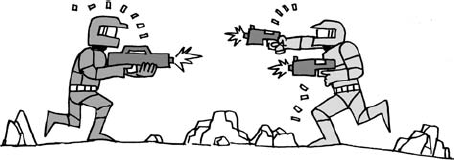
Death match/free-for-all. It's every man for himself as players battle each other for high scores or jockey for the best weapon. Usually players all start on common ground at the beginning of a death match and gain (or lose) equipment that gives them an edge over the course of the game.
Team death match. This mode has teams of players killing each other for dominance. There can even be competitive goals within this mode, where players on the same team can compete for the highest score.
Fighting. Two players enter, one player leaves. Starting with Karate Champ (Data East, 1984), fighting games quickly evolved into their own genre of game. Fighting games often feature head-to-head play, as slow data transmission can cause lag which would interrupt the crucial split-second timing required. This problem seems less of an issue as the release of classic fighting titles such as Street Fighter and Mortal Kombat on Xbox Live Arcade has shown.
Survival. Usually the goal of survival game mode is to defeat all of the enemy or survive getting from point A to B. Players of the Left 4 Dead series watch each other's backs in combat as well as help each other heal when in danger. Survival mode most resembles that found in single-player games with cooperative modes.
Area/territory control. The player has to travel to and protect/defend a certain location from AI enemies or human players. The excitement comes from the tug-of-war struggle of attacking, retreating, and retaking an objective as you attempt to "move the line" closer to the final area. An area control map game can last hours given the right two teams.
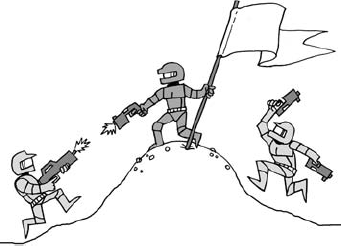
Defend/king of the hill. Much like area control, but one team of players is given a certain location, which needs to be defended for a designated period of time.
Capture the flag. This game mode has one player become a target of the other players, either by possessing an object (like a flag or Halo's oddball skull) or being designated as "it" by the game code. The player that is "it" is sometimes handicapped while they are "it." This can be played both competitively and cooperatively with other team mates protecting the player.
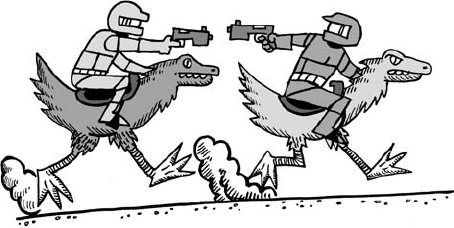
Race/driving. Racing modes have players competing for position or time. Often that competition can get nasty if players are given the means to mess with the other players during the race (such as Mario Kart's power-ups). For combat races, use a regressive system where the player in front is the most vulnerable to attack from the other players who are coming up from behind. Burnout Paradise (EA, 2008) introduced the "Easy Drive" mode where multiple drivers can participate in events and socialize as they drive[166].
Team objective. The players are given an objective, usually one that can only be achieved by working together. The Army of Two series and Fat Princess requires "all hands on deck" in order to win the game.
Man vs God. One player is God who controls almost everything. The other is man who has limited resources. God makes life difficult for man. Man tries to survive despite overwhelming odds[167].
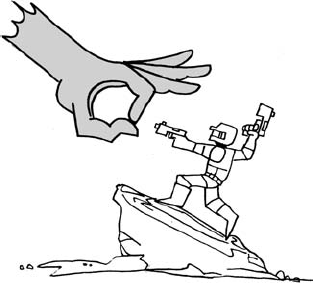
Gambling. Games of chance where players play competitively or in conjugate to achieve the highest score (or at least beat the odds.) Avoid progressive systems where the rich get richer, and the poor get poorer.
Reflex. How fast is your trigger finger? Quiz and puzzle games often have players see who's faster to determine victory, or at least give them an opportunity to use their...

Knowledge. There's nothing like proving you're smarter than the guy sitting next to you on the sofa. This genre has remained consistently present in video games such as the You Don't Know Jack, Buzz! and the Scene It? series.
Creation. LittleBigPlanet, The Sims and Spore's multiplayer components consist of players visiting or interacting with a player's creations. It's a great way to extend the life of a game, as your players are creating the content for you! For example, LittleBigPlanet: Game of the Year Edition showcased 18 brand new levels that were created by the communities' top-rated player creators. A whole subgenre of "play" emerged when players of The Sims were given tools to make "stories" of their characters. These movies became just as popular as the game!
Virtual life. Playstation's Home, Second Life (Linden Research Group, 2003) and Animal Crossing (Nintendo, 2001) are just a few of the virtual worlds where players can customize their world and interact with other online occupants. What started as text-only chatrooms have become the reality described in Neil Stephenson's visionary book Snow Crash.
You may be wondering how many players should multiplayer support? Take, for example, a melee-based fighting game like Street Fighter; With more than two players, there would be all types of problems. Players would bunch up as they fought making it hard to see individual players. Collision detection would be problematic and it would all just devolve into mob warfare rather than the contest of skills that make a good fighting game. On the other hand, an MMORPG like World of Warcraft would feel empty if it only allowed a few hundred players to roam around at the same time. Well, you might not be, but I am. So, how many players should there be? Let's look at the numbers:
Fighting game (Street Fighter) = 2 players
Fighting game (Power Stone) = 4 players
FPS (Call of Duty: Modern Warfare 2) = 16 players
FPS (MAG) = 64, 128 or 256 (depending on game mode)
As you can see, there is a HUGE difference between the numbers of players. So, the answer to the question is: "whatever is right for your game."
The MMORPG genre has evolved rapidly to have its own set of tropes and methods of play, some of which hardly qualify as "playing" at all. Becoming familiar with these tropes and including them in your own design will not only fill out your game but keep you competitive.
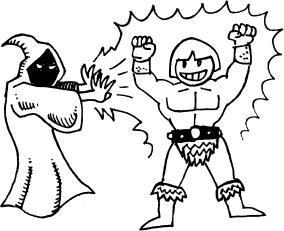
Buffing. Spell casting that affects not only the caster, but the entire party. This allows players to assume certain roles during gameplay. For example, if a cleric is able to prepare a healing buff (via hotkey), as players take damage he can restore them fully to allow them to continue fighting.
Character customization. A huge appeal of any MMO is being able to assume the role of another character and to get lost in that fantasy life. The level of player character customization can range from preset character templates to making characters fully customizable down to sex, eye color, and nose length. Within the game, further encourage customization and let the player buy or win clothing, weapons, armor, gear, and mounts that fit the personality and class of the character they are playing.
Chatting. A text or voice chat system in your game is expected these days. Players will use MMOs as a social gathering place as much as a place to play your game.
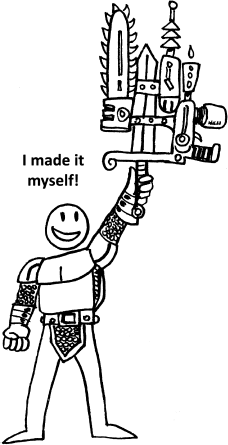
Crafting. Crafting is combining harvested, found, or bought items to create new gear and weapons. Players first need to find "recipes" and "components" for creating items in order to craft objects. Just like creating characters, it's better to let the player craft items so they become recognizable as "their creations." As crafting can create powerful items and weapons, the time it takes to make these creations is usually time consuming. Sometimes players can craft in workshop locations to reduce crafting time. You can use skill-based minigames to successfully initiate the crafting process. Some games allow for "trial and error" style crafting, with the player running the risk of destroyed components if they fail in their attempt. Just don't allow a player to destroy a hard to get an expensive crafting item. It's not fair to punish the player twice!
Economy. Many MMO games thrive on an economy system. Players win treasures that allow them to customize characters, buy better weapons and gear, craft items, and buy housing and mounts, even their own castles! (Or space stations, secret HQs, and so on.) Be sure to balance the effort the player puts into earning the money and the items they can buy with it. Allow for players to carry treasure as well as store it away in personal safes or public banks. Many MMOs have developed an economy that spills over into the real world, where players buy in-game money for real world cash. Many game creators frown on this practice, preferring to control the world's economy themselves.

Grinding. As the players level up their characters, the rate of their progression slows down. Many quests require quest items to complete, and obtaining those items can be time consuming as well. For example, in Mafia Wars (Zynga, 2009), to complete the "Extort a Corrupt Judge" job, you must own the relevant blackmail photo items. To earn blackmail photos you must complete the "Take Compromising Photo" job. But before that, you must have a disposable camera, which can either be gifted to the player by other players or dropped during the "Rob an Electronics Store" job—but there is no guarantee that you'll get the item when you pull the job! As you can see, placing several steps between the player and completion of the goal can get very time consuming... and it can also get very frustrating for the player who feels like their progress has been artificially slowed. If anything gets a player to quit playing a MMO, it's the "grind." While it's not really possible to remove grinding completely from long-term MMO gaming, whatever can be done to reduce this phenomenon, or at least make it entertaining, will be appreciated by your players.
Instanced dungeons. In order to make MMO gaming a unique experience for your players, dungeons are instanced. Content such as enemies and loot or even the level map are randomly generated to provide a different experience each time it is played. These dungeons exist "outside" of the game world, allowing for several groups of players to be in the same albeit alternate versions of the dungeon at the same time. That way, players don't have to wait for the dungeon to "restock" between player interactions.
Item collection. Item collection is a huge motivating factor for players in MMORPGs. Create items that not only improve combat but other in-game abilities—especially tedious ones like crafting, mining, or harvesting resources. Most items fall along a rarity scheme: common, uncommon, rare, and unique. Create special items that can only be gained by defeating specific creatures (getting these items is known as "drops"), seasonal items that are only available at certain times of the year, or by attending specific world events.
Open world structure. Most MMOs feature sandbox worlds where the player can (presumably) go anywhere and do anything. However, that is merely an illusion you will need to maintain for the player. In reality, you will need to build the world in the way you want the player to play the game. Gating mechanisms, such as level or gear requirements will prevent players from travelling to places they aren't ready for. Some games allow players to wander into higher-level sections, but the ass-kicking they receive at the hands of the enemies will usually force them to retreat until they've reached the necessary level to tackle the area's foes.
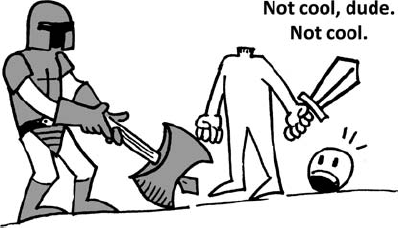
Griefing. Griefing is when a player will harass another player by constantly killing them. Design systems and create a rule structure for your world to combat this bad behavior. Make sure your policies are clear to the players, and a warning/zero tolerance system helps keep the peace.
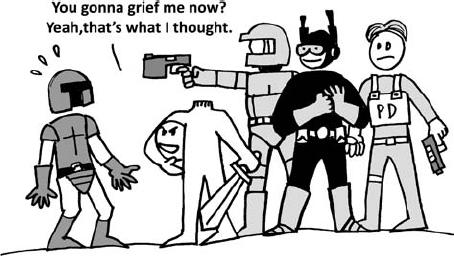
Guilds. Players are social animals and, as a result, they form groups. Players will form parties of characters, called guilds, in order to explore, socialize, and run raids. As a designer, you will want to create in-game meeting places for guilds to socialize. While it requires a lot of work, you may want to also design tools to promote guilds within your game world. Useful guild tools include communication tools, stat tracking, calendars for running raids, and guild asset customization.
Player housing. Everyone likes to play house. Give your player a personal space to show off their achievements, display their souvenirs, or just "park" their player safely between game sessions. Having a home base will make the player feel much more connected and "at home" in the game world, which will make it become a place they want to return to again and again.

Player vs player. Players love to see how strong their characters are by killing other player characters. However, not everyone wants to run the risk of being randomly killed while they play. As a precaution, many MMOs have dedicated PvP servers. Another alternative is that your world has PvP combat restricted to certain locations.
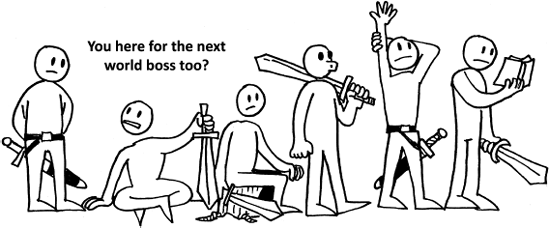
Raids. Raids are when players team up to defeat difficult game scenarios, such as storming a castle or battling a particularly fearsome enemy. Players that assemble and lead a raid need to be one part strategist, one part manager, and one part social director. As a designer, you want to create scenarios that can be overcome by a variety of party configurations, and even allow for the player's creative thinking or just plain dumb luck. Creating and cultivating the legends of these raid targets will let the players know that they have to marshal their forces to defeat them. Design systems that make it easy for players to share the loot after the raid is over based on each player's performance.
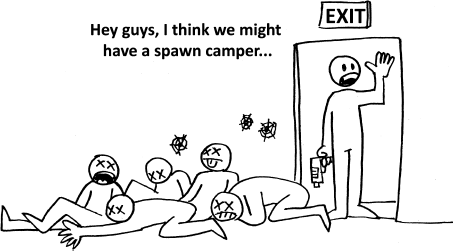
Spawn camping. A practice by players who wait for an enemy or player to appear at a spawn point to kill them. It's a practice frowned upon by most MMO creators and you will have to develop safeguards into your game to discourage or disable this kind of behavior.
Trading/auctions. Because players often end up with lots of identical loot, or with items that their character class can't use, trading and auctions are good solutions to help players clear out inventory. Make sure it's simple for your players to trade items without ripping each other off. Create locations in your game world to promote trading. Some games have auction houses, where regular auctions are held and players can bid on items using in-game treasure.
As you can see there are lots of ways to design play and activities for multiple players. Just remember this very important thing:
Multiplayer offers some great opportunities for players to "find the fun" in your design. Give your players a chance to personalize the way they play, just don't let them exploit it in ways that ruin the fun for other players.
Design your game systems thoroughly, and you will be able to anticipate problems before you start production.
Level 14's Universal Truths and Clever Ideas:
Offer your players a variety of game modes and objectives.
The right number of players is whatever is right for your gameplay.
Allow players to customize their characters, their objects, their world.
New play patterns will emerge when players are given the tools to create.
Determine what level you want players to negatively interact with other players (like PvP).
Players will always do the last thing you expect, but sometimes that's OK.
